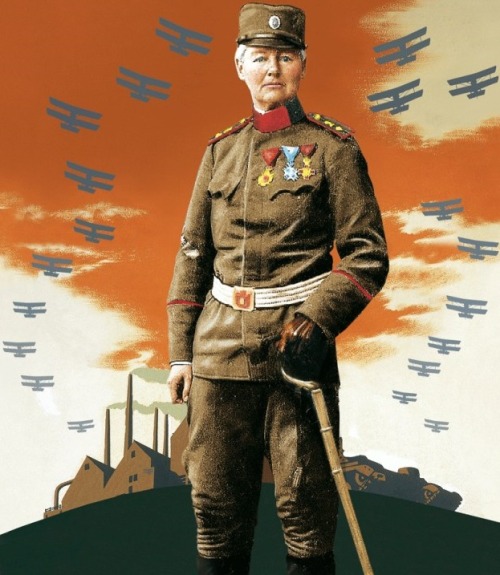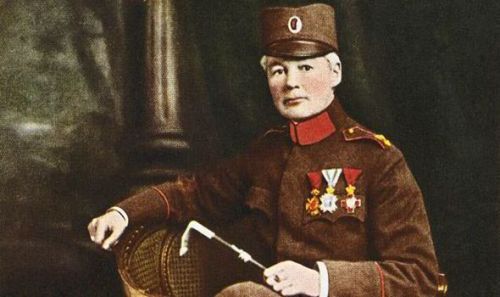The Battling Badassery of Flora Sandes,Flora Sandes was not your average Edwardian Era British woman
The Battling Badassery of Flora Sandes,Flora Sandes was not your average Edwardian Era British woman. Born to an Irish family in Yorkshire, she had a spark of individuality and boldness that was atypical of young women of the times. Morever was the lifestyle she led, as her favorite childhood hobbies were fencing, horesback riding, racecar driving, and shooting.When World War I began in 1914 she volunteered for the war effort by becoming a nurse. At the age of 38, she was placed on detached service with the Serbian Red Cross, aiding the Serbian Army in the fight against the attacking Austro-Hungarian Empire. After one particularly bloody battle in which the Serbian Army was forced into a chaotic retreat, Sandes was separated from her unit. Rather than return to nursing, Sandes did something unthinkable for an early 20th century British woman, she volunteered for service with a Serbian combat unit on the frontlines.The Serbians during World War I are especially noted for being the toughest and most ruthless soldiers of the war. After all Serbia was a small nation being invaded by a large empire. Outgunned and outnumberd 10 to 1, the Serbians relied upon toughness and ruggedness in order to survive the Austro-Hungarian onslaught. Flora was no exception; she could drink, cuss, and brawl with the best of them. Gaining a reputation as a fierce combat soldier, she was particularly noted for being an excellent shot with a revolver and a deadly master of bayonet fighting. She was also assigned to an elite unit called the “Iron Regiment”, one can probably assume that you have to be one hell of a badass to join a combat unit called the “Iron Regiment”. As the war progressed, she advanced in rank from private, to corporal, sergeant, then finally to sergeant-major, the highest non-commissioned rank in the army. When she wasn’t busy fighting in the trenches, she wrote letters back home to British newspapers detailing the plight of Serbia, asking for aid from the British people. In one instance, she was able to raise enough money to replace her regiment’s tattered uniforms with new clothing and buy new weapons.In 1916 at the Battle of Bittola, after a particularly bloody bought of hand to hand combat, Sandes was severely wounded by a grenade blast. The wound was bad enough that she was unable to resume combat service, in fact she barely survived the year long recovery period from her grievous wounds. For her actions at Bittola Sandes was awarded the Order of the Karađorđe’s Star, the highest Serbian award for courage and gallantry. After recovering from her wounds, Sandes spent the rest of the war running her own hospital and raising money for the Serbian cause. After the war ended in 1918, she was well enough that she resumed her military career. To her surprise, she was given an officers commission with the rank of captain and assigned command of the Iron Regiment. Sandes retired in 1922 with the rank of major, married a Russian White Army general in 1927, published an autobiography, and traveled the world giving lectures on her wartime experiences. When the Germans invaded Yugoslavia during World War II Sandes was recalled to military service, but the Germans overran the country before she could be mobilized. She and her husband were briefly interned before being released on parole. She returned to England where she lived out the rest of her life, passing in 1956 at the age of 80. -- source link
Tumblr Blog : peashooter85.tumblr.com
#history#women#badasses#wwi#serbian army#flora sandes



